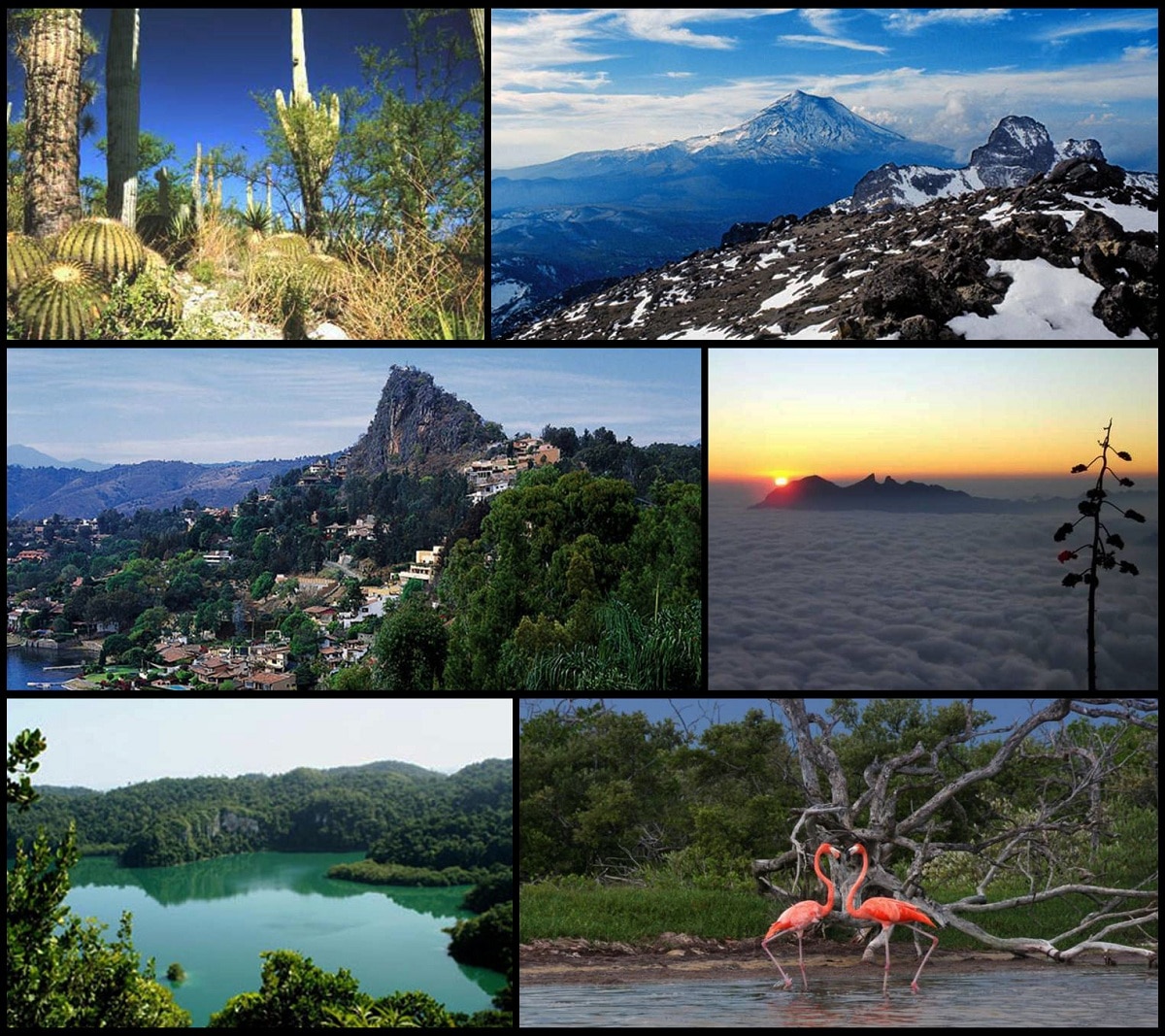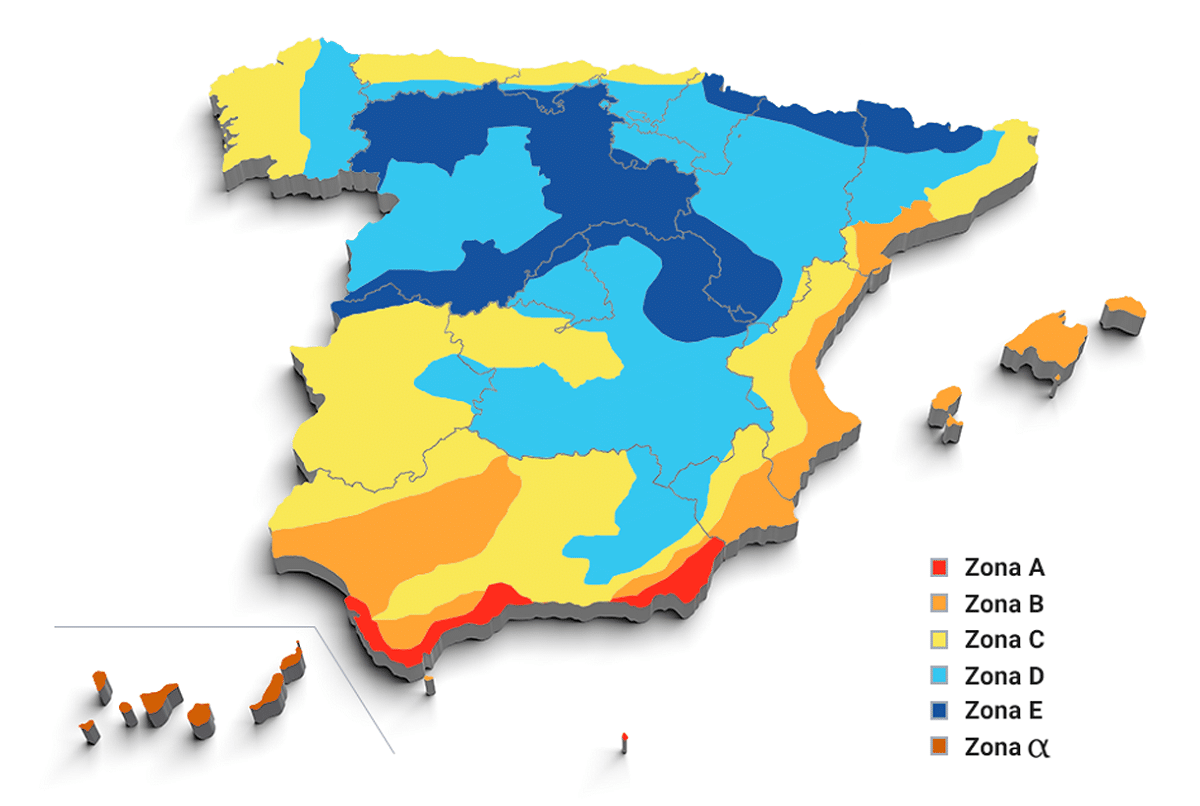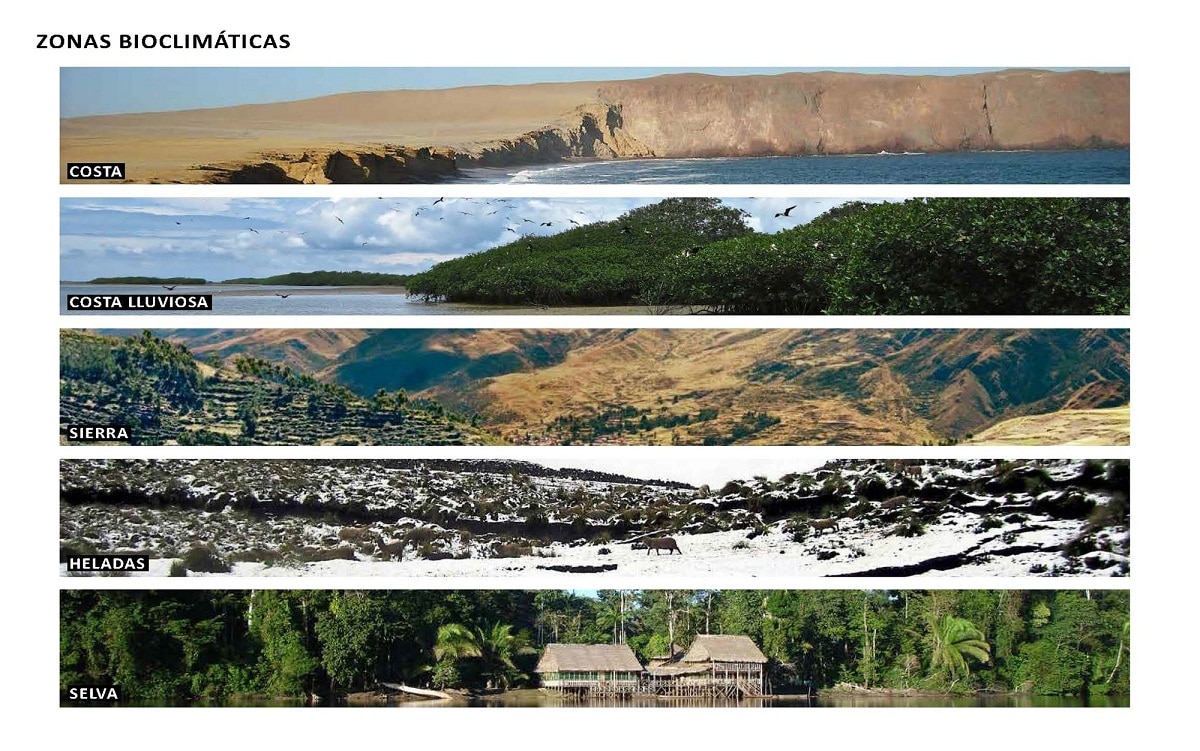
As we know, the climate is capable of creating zones with different characteristics in which life adapts continuously. For example, we find warm, cold and temperate zones with vegetation and fauna adapted to it and with ecosystems typical of that zone. This is known by the name of bioclimatic zones. Climate action in a given region is crucial for the development and evolution of life and landscapes.
For this reason, we are going to dedicate this article to telling you everything you need to know about bioclimatic zones and their characteristics.
Influence of climate on bioclimatic zones

The diversity of the geographical environment is determined by a number of factors such as topography, water, soil and vegetation. In this topic we will analyze this breed based on what we consider the most important variable: the climate.
Climate studies reveal existing regional diversity related to temperature, precipitation, hours of sunshine, fog, frost, and more. All this is due to a series of factors and elements that we will analyze below, but first it is necessary to understand what we mean by weather and climate.
Weather is the state of the atmosphere at a given time and place. Climate will be a periodic succession of weather types. To understand the climate of a region, we need at least 30 years of information.
bioclimatic zones

intertropical region
It covers all the climates situated between two tropical regions. The general characteristics are:
- High temperature all year (higher than 16ºC).
- Annual rainfall greater than 750 mm. Caused by convective motion, the Tropical Convergence Zone, and the Eastern Jet Stream.
- Vigorous growth of vegetation. Although its distribution and the appearance of different types of forests are related to the amount of rainfall and its annual distribution.
humid equatorial
It is found in Guinea Africa, Congo, Indochina, Indonesia and the Amazon basin. The average annual temperature is around 22º-26ºC, with a small thermal amplitude. The annual precipitation is 1500-2000 mm. Annual, no dry season, high relative humidity (85%). The rivers are mighty and regular.
The representative vegetation is the jungle: dense, closed formations, rich in vegetation, impenetrable by legumes and orchids. The trees are very tall and their crowns form a continuous canopy; its bark is smooth and the lower two thirds of the trunk are free of branches; the leaves are broad and evergreen. Lianas and epiphytes (plants that grow on branches and bushes) are also typical.
The soil lacks humus and has a laterite crust due to excessive cleaning (leaching) by rainwater.
Tropical
It occurs on the edges of the equatorial belt and the western continents, the Caribbean and Central America.
Temperatures are high throughout the year, but annual temperature fluctuations increase. As for rainfall, they are between 700 and 1500 mm.
Vegetation adapts to drought by hardening its stems and leaves and reducing their size. The main plant formation is the savannah, which is characterized by a large number of tall herbs (grass) and small shrubs and some sporadic trees. We can distinguish several subtypes:
- wooded savannah formed by spaced trees and dense undergrowth formed by herbs. In Africa, acacias and flat-topped baobabs are typical.
- grassy savannas high associated with semi-arid environments of tropical climates.
- In South America, tropical climates are associated with so-called closed fields.
- In Australia we find hard-leaved tree savannas like eucalyptus.
Monsoon
Also known as humid tropical climate; distributed in Southeast Asia (India, Indochina, Indonesia) and Madagascar. Temperatures are high throughout the year. As for rainfall, there are seven or eight months of rainy season and dry season. The rain is heavy and is caused by the monsoon. In winter, trade winds blow from the mainland (the rainless season), but in summer, hot, humid trade winds from the southern hemisphere cross the equator and drift southwest, bringing heavy rain when they reach the continent.
The monsoon forest presents a more open pattern than before, so there is a great development of the undergrowth vegetation. The trees are 12 to 35 meters high, the most representative being teak and bamboo. Lianas and epiphytes also appeared.
Bioclimatic zones of arid regions
Regarding its location, we distinguish:
- A permanent anticyclonic zone that affects the west coast of the continent: the Australian Sahara desert. The tropics produce a constant dry sinking air mass that is very warm when it reaches the surface in strong sunlight.
- In the interior of the continent, since the storm arrives very weak: Central Russia and the American Midwest.
- There are mountainous obstacles that prevent the passage of storms to the lee: Mongolia, Patagonia and the western United States.
- Coastal deserts are the result of cold ocean currents. The wind cools when it comes into contact with these ocean currents, but their low water vapor content means that fog is only generated when they reach the continents. An example is the Atacama desert in Chile.
temperate regions

Mediterranean coast
It is found between 30º-45º north and south latitude, more specifically the countries bordering the Mediterranean Sea, southwestern Australia, California, central Chile and southwestern South Africa.
The temperatures are mild ranging between 21º and 25ºC in summer and between 4º and 13ºC in winter. Rainfall ranges between 400 and 600 mm. Annual, usually occurs in spring and fall. The dry season coincides with summer.
The representative vegetation is the sclerophyllous, with small and hard cortical leaves, thick bark and knotty and twisted branches. In the Mediterranean region, this forest is made up of trees such as cork oaks, holm oaks, Aleppo pines, stone pines and olive trees. There is also a rich shrub layer of strawberry trees, Kermes oaks, junipers and junipers.
Oceanic
It is found in northwestern Europe, the northwestern coast of the United States, the eastern coast of Canada, southern Chile, southeastern Australia, Tasmania, and northeastern New Zealand.
They are areas within the range of permanent disturbance of the polar fronts, so they lack dry seasons. Rainfall ranges between 600 and 1.200 mm, being the most intense in winter. Temperatures are moderate, between 8º and 22ºC, due to the softening influence of the oceans, although they descend towards the north and towards the interior of the continents.
I hope that with this information you can learn more about bioclimatic zones and their characteristics.